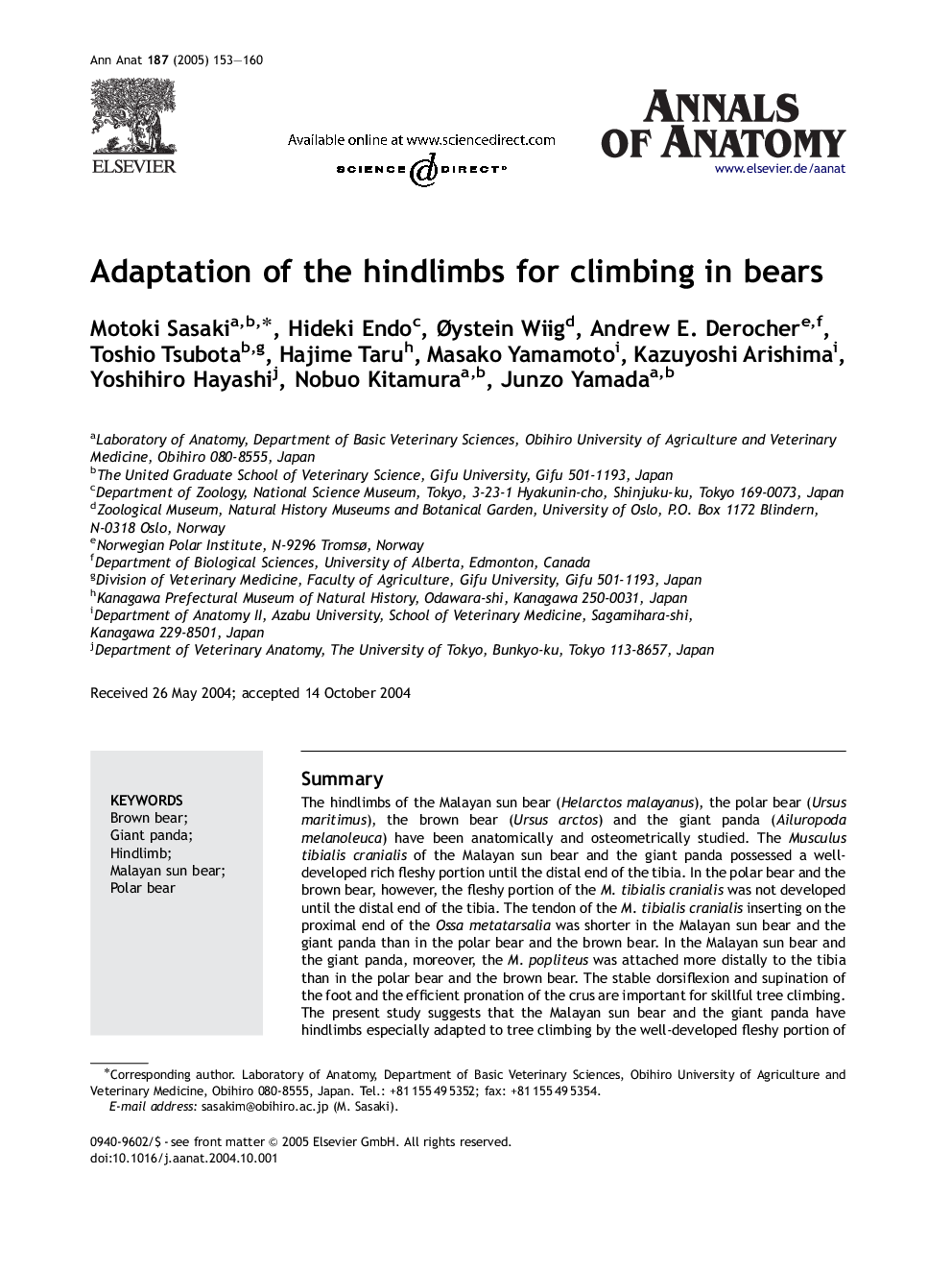| کد مقاله | کد نشریه | سال انتشار | مقاله انگلیسی | نسخه تمام متن |
|---|---|---|---|---|
| 9911078 | 1549057 | 2005 | 8 صفحه PDF | دانلود رایگان |
عنوان انگلیسی مقاله ISI
Adaptation of the hindlimbs for climbing in bears
دانلود مقاله + سفارش ترجمه
دانلود مقاله ISI انگلیسی
رایگان برای ایرانیان
کلمات کلیدی
موضوعات مرتبط
علوم زیستی و بیوفناوری
بیوشیمی، ژنتیک و زیست شناسی مولکولی
بیولوژی سلول
پیش نمایش صفحه اول مقاله

چکیده انگلیسی
The hindlimbs of the Malayan sun bear (Helarctos malayanus), the polar bear (Ursus maritimus), the brown bear (Ursus arctos) and the giant panda (Ailuropoda melanoleuca) have been anatomically and osteometrically studied. The Musculus tibialis cranialis of the Malayan sun bear and the giant panda possessed a well-developed rich fleshy portion until the distal end of the tibia. In the polar bear and the brown bear, however, the fleshy portion of the M. tibialis cranialis was not developed until the distal end of the tibia. The tendon of the M. tibialis cranialis inserting on the proximal end of the Ossa metatarsalia was shorter in the Malayan sun bear and the giant panda than in the polar bear and the brown bear. In the Malayan sun bear and the giant panda, moreover, the M. popliteus was attached more distally to the tibia than in the polar bear and the brown bear. The stable dorsiflexion and supination of the foot and the efficient pronation of the crus are important for skillful tree climbing. The present study suggests that the Malayan sun bear and the giant panda have hindlimbs especially adapted to tree climbing by the well-developed fleshy portion of the M. tibialis cranialis reaching the distal end of the tibia, its short tendon, and the M. popliteus inserting near the distal end of the tibia.
ناشر
Database: Elsevier - ScienceDirect (ساینس دایرکت)
Journal: Annals of Anatomy - Anatomischer Anzeiger - Volume 187, Issue 2, 19 April 2005, Pages 153-160
Journal: Annals of Anatomy - Anatomischer Anzeiger - Volume 187, Issue 2, 19 April 2005, Pages 153-160
نویسندگان
Motoki Sasaki, Hideki Endo, Ãystein Wiig, Andrew E. Derocher, Toshio Tsubota, Hajime Taru, Masako Yamamoto, Kazuyoshi Arishima, Yoshihiro Hayashi, Nobuo Kitamura, Junzo Yamada,